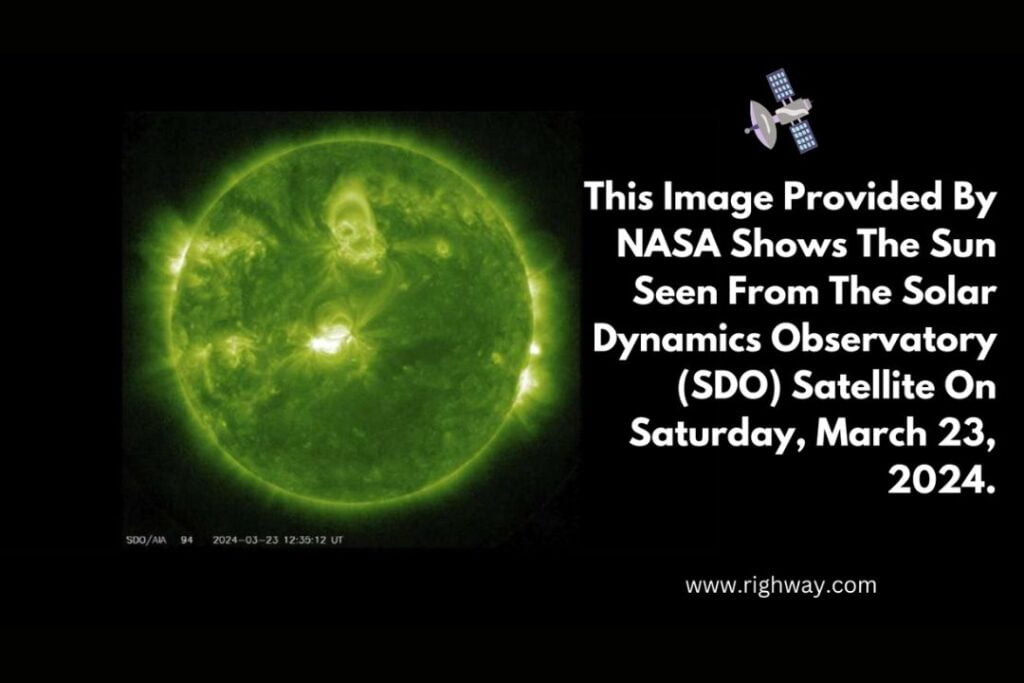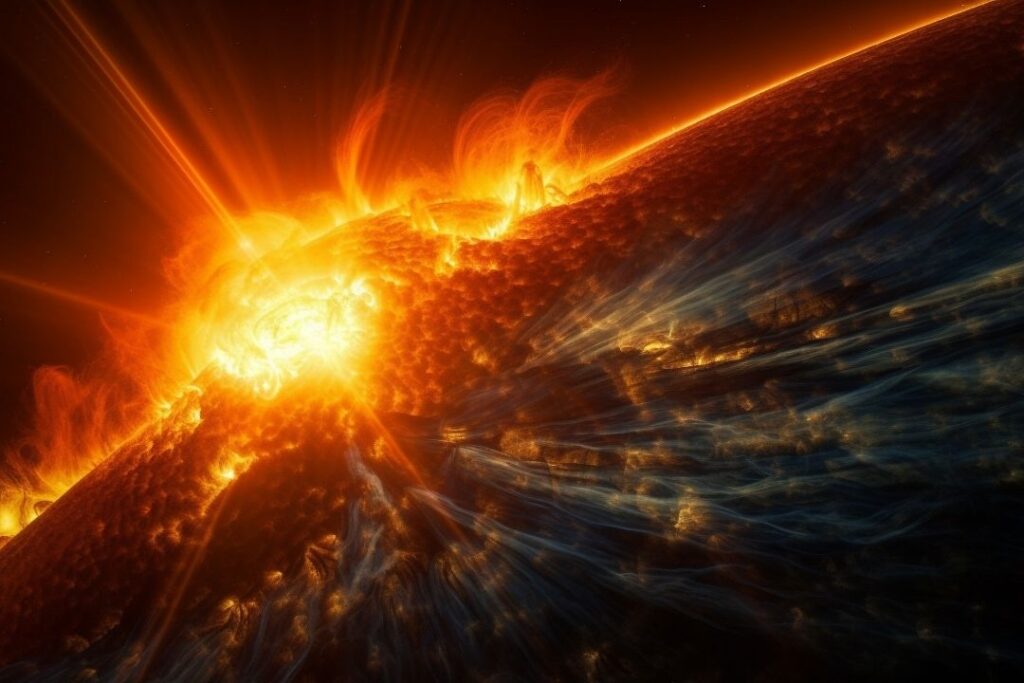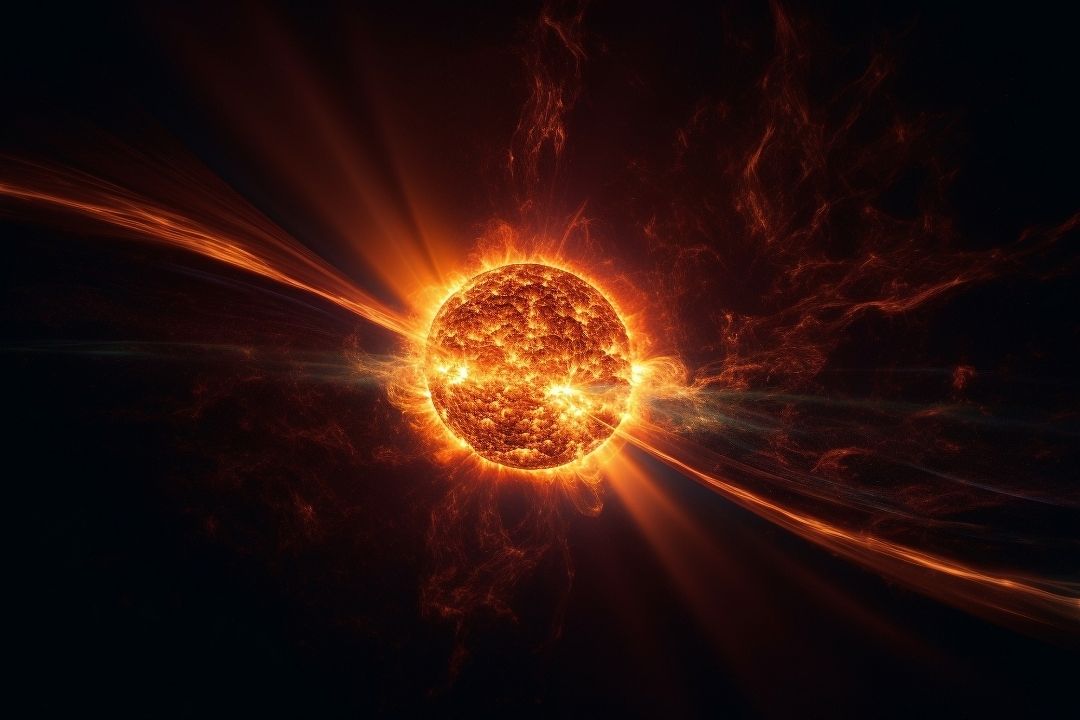Have you ever wondered about the fascinating phenomena of Solar Flare and Geomagnetic Storms that can have a significant impact on Earth? In this blog post, we will explore the world of space weather and how these cosmic events can influence our planet.
Thank you for reading this post, don't forget to subscribe!Geomagnetic storms are disturbances in the Earth’s magnetic field caused by solar activity, particularly solar flares. On the other hand, solar flare are sudden and intense bursts of radiation emitted by the Sun. Both events can lead to disruptions in satellite communication, power grids, and even GPS systems on Earth.


What Causes Geomagnetic Storms and Solar Flares?
Geomagnetic storms are triggered by solar wind interacting with the Earth’s magnetosphere, while solar flares are a result of magnetic reconnection on the Sun’s surface. These events release massive amounts of energy and charged particles into space, which can reach Earth and cause disturbances in our planet’s magnetic field.
Difference Between Geomagnetic Storms and Solar Flare
While both geomagnetic storms and solar flares are related to solar activity, they have different effects on Earth. Geomagnetic storms can lead to auroras, power outages, and disruptions in satellite communication, while solar flares can release harmful radiation that can impact space travel and astronaut safety.
What effect can geomagnetic storms and solar flares have on Earth?
The effects of geomagnetic storms and solar flares on Earth can be far-reaching. They can disrupt telecommunications, interfere with satellite navigation systems, and even pose a risk to power grids. Understanding these phenomena is crucial for mitigating their impact on our daily lives.
How to Predict Geomagnetic Storms and Solar Flare
Scientists use a variety of tools and instruments to monitor solar activity and predict geomagnetic storms and solar flares. By studying the Sun’s behavior and monitoring space weather conditions, researchers can provide early warnings of potential disturbances that could affect Earth.
Recent Geomagnetic Storm and Solar Flare Events
In recent years, there have been several notable geomagnetic storm and solar flare events that have captured the attention of scientists and space enthusiasts. From the Carrington Event of 1859 to the Halloween storms of 2003, these events have demonstrated the power of solar activity on our planet.
Geomagnetic Storm and Solar Flare Alerts
To keep the public informed about potential geomagnetic storms and solar flare, organizations like NOAA and NASA issue alerts and warnings based on the latest space weather data. These alerts can help individuals and businesses prepare for possible disruptions caused by these cosmic events.
Safety Tips During Geomagnetic Storms and Solar Flares
During geomagnetic storms and solar flares, it is important to take precautions to protect yourself and your electronic devices. Stay indoors during a geomagnetic storm, avoid using electronic devices that could be affected by solar radiation, and follow the advice of emergency officials in your area.
Space Weather Forecast for the Upcoming Days
Looking ahead, scientists are closely monitoring solar activity and predicting potential geomagnetic storms and solar flares in the coming days. By staying informed and prepared, we can minimize the impact of these cosmic events on our daily lives and technological infrastructure.
The Connection Between Geomagnetic Storms and Solar Flare
There is a close relationship between geomagnetic storms and solar flare, as both events are driven by the Sun’s activity. Understanding this connection can help us better predict and prepare for disruptions caused by solar radiation and charged particles reaching Earth’s atmosphere.
Effects of Geomagnetic Storms and Solar Flare on Technology
The effects of geomagnetic storms and solar flares on technology are well-documented, with potential disruptions to satellite communication, power grids, and electronic devices. By studying these events and their impact on our infrastructure, we can develop strategies to mitigate their effects and improve our resilience.
Historical Geomagnetic Storm and Solar Flare Events
Throughout history, there have been several significant geomagnetic storm and solar flare events that have left their mark on Earth. From the Quebec blackout of 1989 to the more recent impact on GPS satellites, these events serve as a reminder of the power of solar activity on our planet.
Solar Activity and Its Relation to Geomagnetic Storms
Solar activity, including sunspots, solar flares, and coronal mass ejections, plays a crucial role in triggering geomagnetic storms on Earth. By monitoring the Sun’s behavior and studying space weather patterns, scientists can provide valuable insight into the potential for geomagnetic disturbances in our planet’s magnetosphere.
The Role of the Sun in Geomagnetic Storms and Solar Flare
As the primary source of energy in our solar system, the Sun plays a central role in driving geomagnetic storms and solar flares. Understanding the Sun’s behavior and its impact on Earth’s magnetosphere is essential for predicting and preparing for potential disruptions caused by solar activity.


The Science Behind Solar Flare
These flares occur when the Sun’s magnetic field lines get tangled up and suddenly realign. This process releases a tremendous amount of energy, causing a burst of radiation that can travel through space and reach Earth.
Types of Solar Flare
Solar flares are classified based on their strength. Minor Flares are smaller, more frequent, and less likely to cause significant disruptions. Major Flares, on the other hand, can cause noticeable effects on Earth, from radio blackouts to auroras.
What Are Geomagnetic Storms?
Geomagnetic storms are disturbances in Earth’s magnetosphere caused by solar wind shock waves and the magnetic field of solar flares interacting with Earth’s magnetic field. These storms can range from mild to severe, affecting various aspects of our technology and life.
How Geomagnetic Storms Occur
When a solar flare ejects a cloud of plasma into space, this plasma can travel towards Earth. If it interacts with Earth’s magnetic field, it can cause a geomagnetic storm. The intensity of the storm depends on the strength and direction of the magnetic field in the solar wind.
Categories of Geomagnetic Storms
Geomagnetic storms are categorized from G1 (minor) to G5 (extreme). A G1 storm might cause minor issues with satellites, while a G5 storm can disrupt power grids and communications globally.
The Connection Between Solar Flare and Geomagnetic Storms
The energy released by solar flares can cause geomagnetic storms if the solar wind and plasma ejected from the Sun interact with Earth’s magnetic field. This connection is why monitoring solar flares is crucial for predicting geomagnetic storms.
Historical Impact of Solar Flares and Geomagnetic Storms
Two notable events highlight the power of these phenomena: The Carrington Event of 1859, the most powerful geomagnetic storm on record, and The March 1989 Geomagnetic Storm, which caused a massive blackout in Quebec.
Effects on Modern Technology
Today’s technology is highly susceptible to solar flares and geomagnetic storms. Satellites can be knocked out of orbit, power grids can be disrupted, and communication systems can experience blackouts.
Impacts on Human Health
While solar flares and geomagnetic storms primarily affect technology, they can also have indirect effects on human health. Increased radiation can be a concern for astronauts and high-altitude flights, and some studies suggest that geomagnetic storms might influence human mood and behavior.
Predicting Solar Flares and Geomagnetic Storms
Scientists use various methods to predict solar flares and geomagnetic storms, including monitoring sunspot activity and solar wind conditions. Accurate predictions help mitigate potential disruptions.
Preparedness and Mitigation Strategies
Different strategies are in place to cope with these solar phenomena. For Governments, creating robust infrastructure and emergency plans is key. For Businesses, protecting sensitive equipment and having backup systems is crucial. For Individuals, staying informed and having personal preparedness plans can make a big difference.
The Positive Side of Solar Flare and Geomagnetic Storms
Despite their potential for disruption, solar flares and geomagnetic storms have a positive side. Auroras are one of the most beautiful natural displays caused by these storms. Additionally, these phenomena offer valuable scientific research opportunities that help us understand the universe better.
Geomagnetic storms and solar flares are fascinating cosmic events that can have a significant impact on our planet. By studying these phenomena and their effects on Earth’s magnetic field and technology, we can better prepare for potential disruptions and safeguard our infrastructure against the power of space weather.
Thank you for reading the article on ‘Geomagnetic Storm Solar Flare Today.’ Stay informed and prepared for potential cosmic events that could impact our planet.
Stay connected with RIGHWAY on social media. Follow us on Facebook, Twitter/X, and Instagram for the latest news updates, behind-the-scenes content, and more. Engage with us online and be a part of our growing community.
Sign up for our newsletter to get the latest news delivered straight to your inbox. Follow us on social media for real-time updates and engaging content.
Stay connected with RighWay, where your news journey begins.
More like this Latest News
- EV Charging vs. Gas Prices: The Surprising Savings in 2024
- Surviving the COVID Summer Wave: Top Tips to Stay Safe
- Top 10 Peloton Instructors Who Will Transform Your Workout Routine
- What is the Bird Flu Pandemic?
- How to Treat Bee Sting Pain: Effective Remedies and Tips
- Lung Cancer: Can It Truly Be Cured?
- Types and Categories of Heart Health Supplements
- How Maye Musk’s flexitarian diet keeps her fit at 76
- Where is Uefa Euro 2024?
- Can Health Insurance Be Cancelled at Any Time?
- What Will Tesla Stock Be Worth in 2025?

